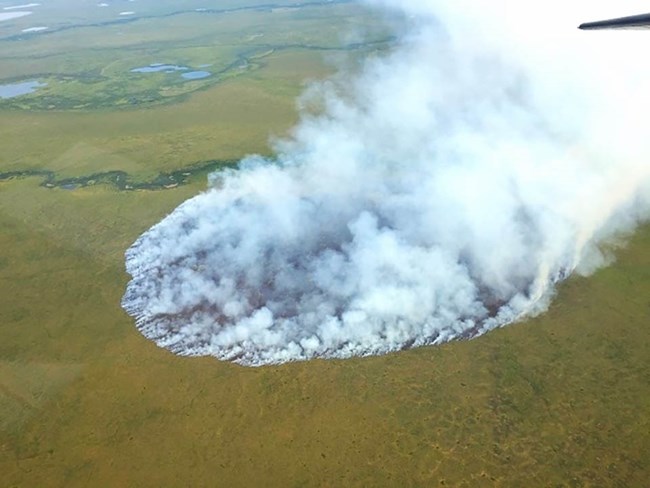Last updated: December 30, 2019
Article
Tundra and Boreal Soils Response to Fire
The recent increases in fires across Alaska sparks questions of the variable impacts of fires, particularly in areas with and without permafrost. This study examines the short- and long-term effects of forest fires on soil thermal dynamics. Researchers examine case studies from both boreal and tundra forest fires and the biggest difference between the effects can be seen in the soil when there was permafrost present. When forest fires occurred in areas with permafrost, the permafrost underlying the active layer soil mitigated the damage done by fires. Measured by the thickness of the soil organic layer and soil conductivity, researchers determined that forest fires had significantly less impact on soil temperature increases due to permafrost.
The layer of permafrost insulated the active layer soil from dehydration, leading to lower levels of drainage, moisture loss, and vegetation flammability. All of these effects are reversed when there is no permafrost layer to provide protection to the soil. Importantly, studies like these allow scientists to better predict the impact of tundra and boreal forest fires in areas with or without permafrost.

Contrasting soil thermal responses to fire in Alaskan tundra and boreal forest
Abstract
Recent fire activity throughout Alaska has increased the need to understand postfire impacts on soils and permafrost vulnerability. Our study utilized data and modeling from a permafrost and ecosystem gradient to develop a mechanistic understanding of the short‐ and long‐term impacts of tundra and boreal forest fires on soil thermal dynamics. Fires influenced a variety of factors that altered the surface energy budget, soil moisture, and the organic‐layer thickness with the overall effect of increasing soil temperatures and thaw depth. The postfire thickness of the soil organic layer and its impact on soil thermal conductivity was the most important factor determining postfire soil temperatures and thaw depth. Boreal and tundra ecosystems underlain by permafrost experienced smaller postfire soil temperature increases than the nonpermafrost boreal forest from the direct and indirect effects of permafrost on drainage, soil moisture, and vegetation flammability. Permafrost decreased the loss of the insulating soil organic layer, decreased soil drying, increased surface water pooling, and created a significant heat sink to buffer postfire soil temperature and thaw depth changes. Ecosystem factors also played a role in determining postfire thaw depth with boreal forests taking several decades longer to recover their soil thermal properties than tundra. These factors resulted in tundra being less sensitive to postfire soil thermal changes than the nonpermafrost boreal forest. These results suggest that permafrost and soil organic carbon will be more vulnerable to fire as climate warms.
Jiang, Y., A. V. Rocha, J. A. O’Donnell, J. A. Drysdale, E. B. Rastetter, G. R. Shaver, and Q. Zhuang. 2015. Contrasting soil thermal responses to fire in Alaskan tundra and boreal forest. Journal of Geophysical Research-Earth Surface 120:363-378.
